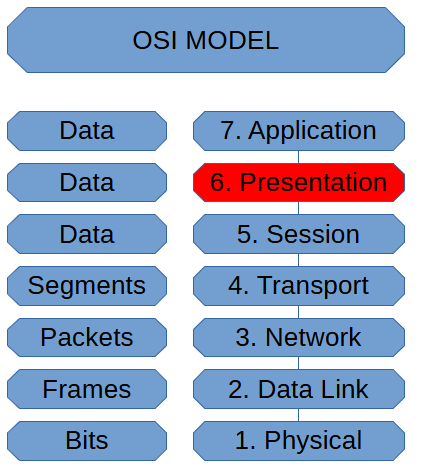In the OSI Model, the Presentation Layer is where we format, compress, or encrypt, ensuring that the applications involved can use the data. This process ensures that the applications involved can use the data received.
When receiving data, this is where data gets uncompressed, decrypted, and to be reformatted if needed to suit the application receiving data.
Data is encoded using ASN.1 (Abstract Syntax Notation One) to help achieve a universal format that gets translated into something like ASCII or UTF-8. The standards of data are also defined in the Application Layer so that complicated data streams, such as media streaming, are handled.
Although HTTP is mostly Application Layer Protocol, one could argue that the formatting of the actual HTTP requests would happen here. However, this can make the presentation layer harder to understand. Like HTTP, many widely used applications and protocols provide little to no distinction between the Application and Presentation layer.
